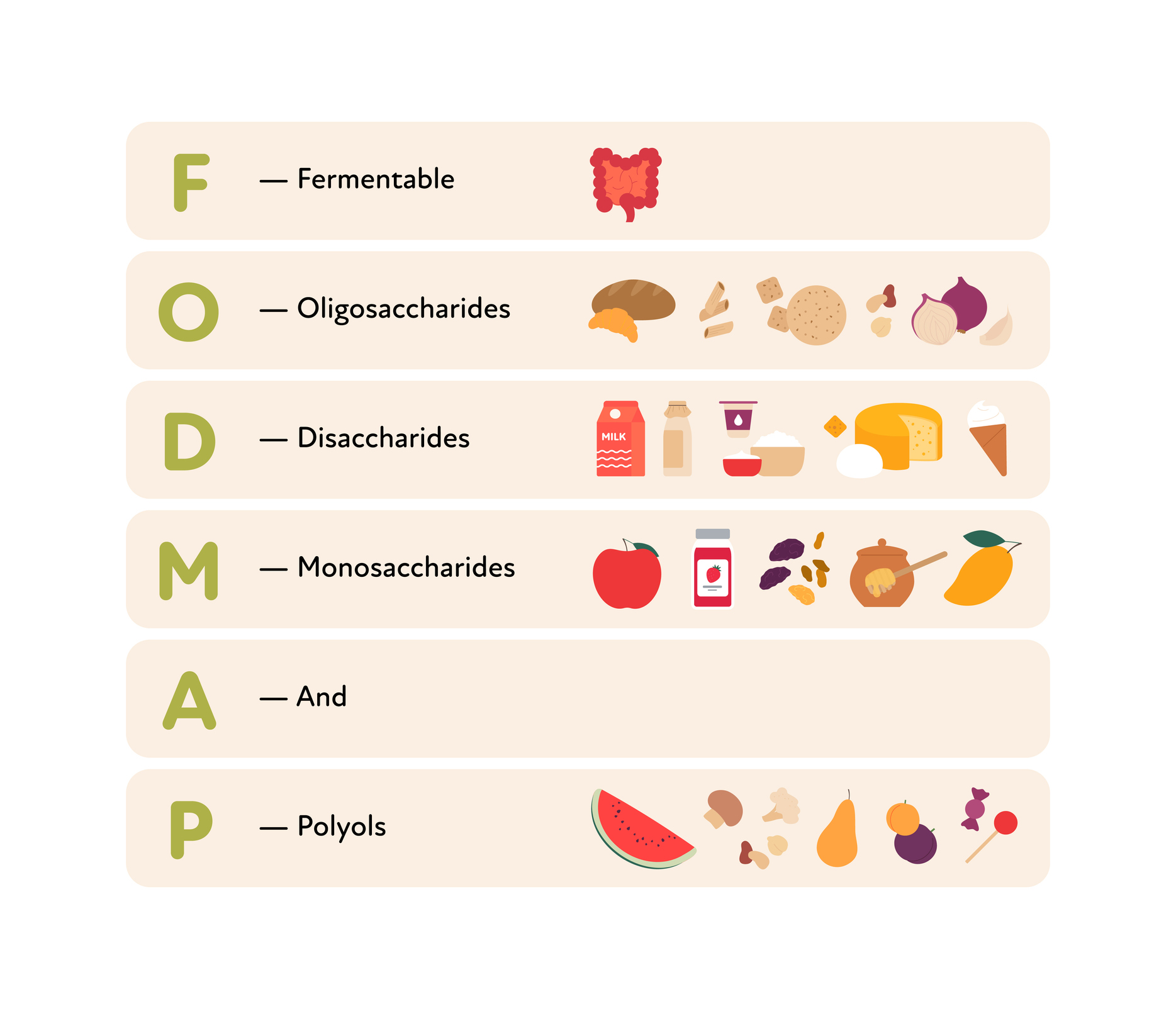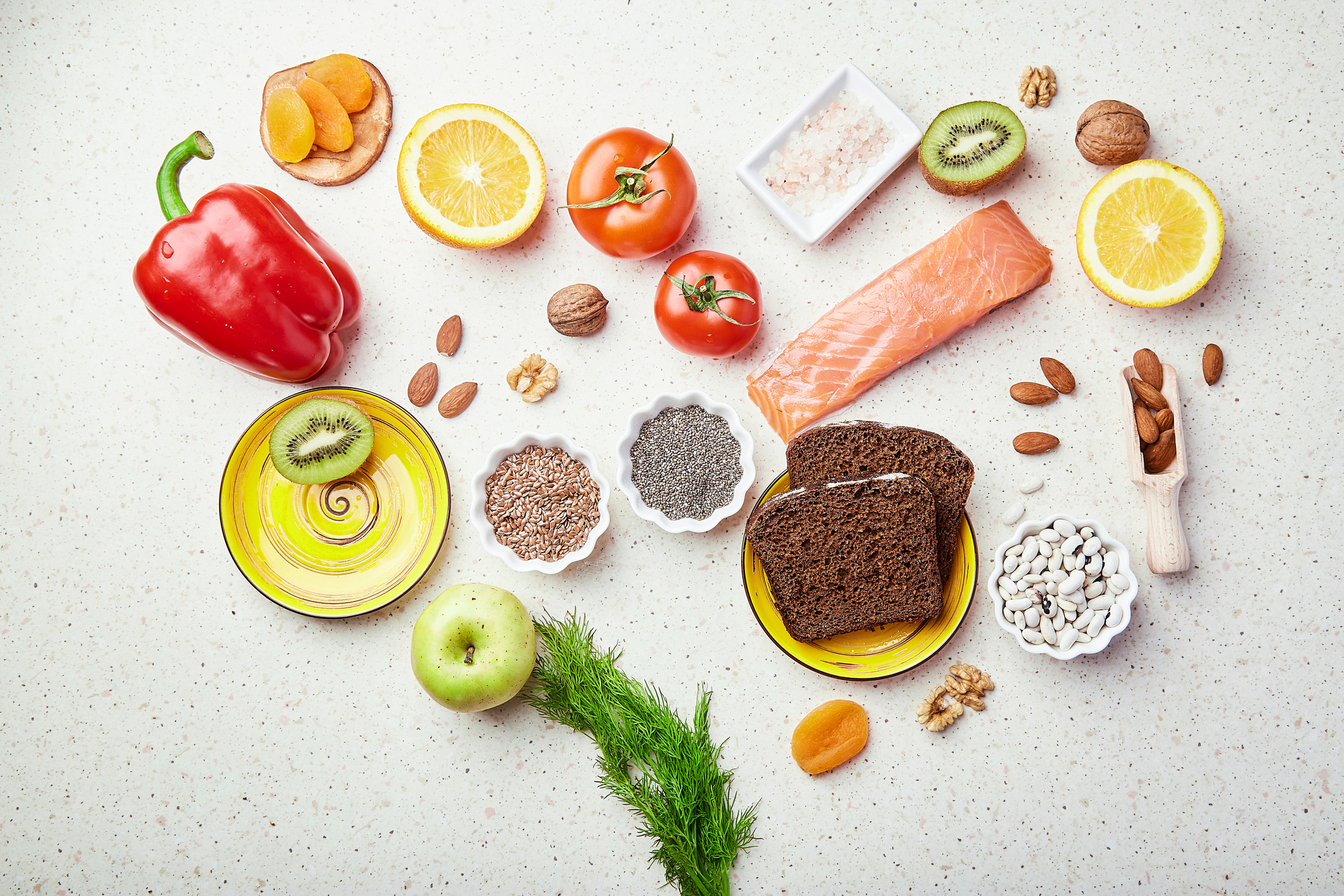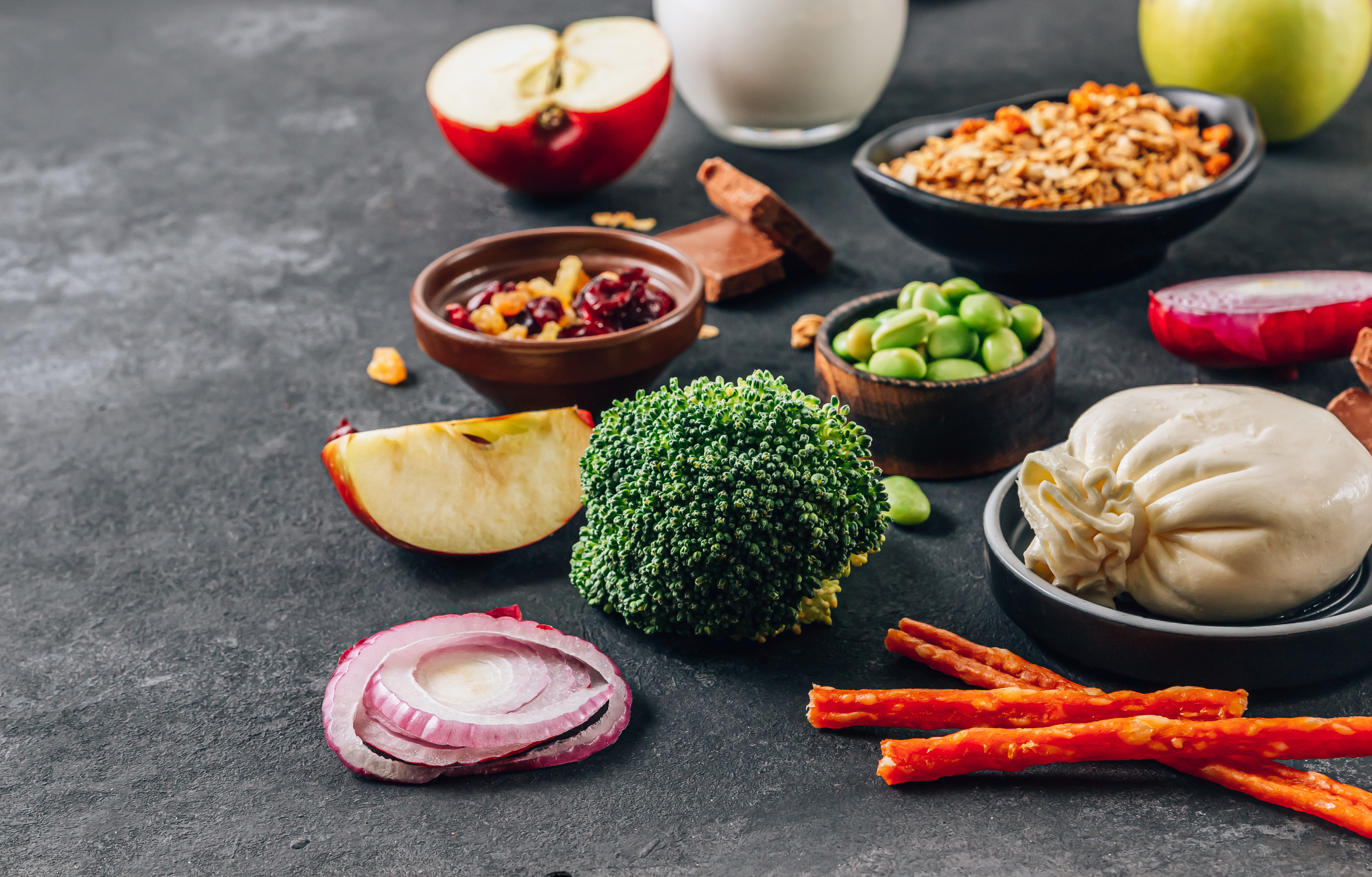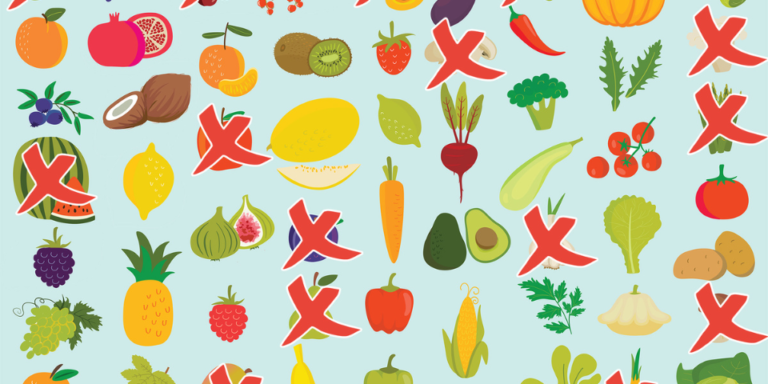The Low-FODMAP Diet: A Solution for Digestive Discomfort?
If you’ve experienced ongoing digestive issues, you know certain foods can wreak havoc on your gut and cause all sorts of unpleasant symptoms — like chronic stomach pain, gas, bloating, diarrhea, and constipation.
It can be hard to pinpoint exactly which foods are making you feel miserable, but researchers have found that an elimination diet called the low-FODMAP diet may help relieve digestive discomfort by identifying the foods most likely to trigger it.
Obviously, if you’re experiencing serious gastrointestinal problems, you should seek the guidance of a qualified professional. But if you’re wondering whether a low-FODMAP diet can help you beat the bloat and keep your stomach settled, here’s what you should know.
What Is a Low-FODMAP Diet?

Also known as the “FODMAP Diet” or “IBS Diet,” a low-FODMAP diet works by temporarily cutting from your diet a specific group of carbs known as FODMAPs: fermentable oligosaccharides, disaccharides, monosaccharides, and polyols. By eliminating and then reintroducing these carbohydrates — which are poorly (if at all) absorbed in your gut — you can start to figure out which high-FODMAP foods your gut can tolerate, and which ones make you feel… er, crappy.
Researchers at Monash University in Australia originally formulated the diet to address the role of these carbs in irritable bowel syndrome (IBS).
Is a Low-FODMAP Diet Healthy?
As a short-term regimen, a low-FODMAP diet is a safe way to figure out which foods may be triggering your gastro troubles so you can get some much-needed relief. But a lot of healthy staples — including many legumes, whole grains, fruits, and veggies — are high in FODMAPs, so you definitely don’t want to ban all FODMAPs forever.
“We want people to be eating these foods,” says Andrea N. Giancoli, M.P.H., R.D. “The idea is to identify more precisely which foods are causing symptoms, and slowly reintroduce the rest as part of a balanced diet.”
Why you might need professional guidance
Elimination and reintroduction can be a complicated process. So even though you may be tempted to fire off a printable FODMAP food list and go the DIY route, it’s important to talk to a dietitian who specializes in gastrointestinal disorders and can guide you through each step.
“There are a lot of things that can go on in the stomach and small intestine, so it’s important not to self-diagnose,” Giancoli says. “You don’t want to do an elimination diet if it’s not necessary, or if it’s not going to be effective.”
For starters, the elimination phase isn’t as simple as banning all foods that contain FODMAPs. You may be able to tolerate certain high-FODMAP foods in small serving sizes without triggering symptoms. For example, wheat is restricted on a low-FODMAP diet, but your dietitian may give you the go-ahead to eat a single slice of wheat bread now and then.
And FODMAP food lists aren’t as straightforward as they may seem. Bananas, for example, are high-FODMAP when ripe, but low-FODMAP when unripe. Legumes are considered a high-FODMAP food, but canned chickpeas and lentils tend to be lower in FODMAPs, and smaller portion sizes may not trigger symptoms.
The reintroduction, or challenge, phase can also be tricky. Let’s be honest — even with a list of low-FODMAP foods in hand, most of us don’t know our disaccharides from our polyols. A dietitian can walk you through the steps of reintegrating each subgroup into your diet.
“It’s very important to do this in a methodical way to determine which foods and FODMAP groups trigger symptoms and which do not,” says Alicia Galvin, R.D.
Bottom line: Everyone’s tolerance for FODMAPs is different. Working with a dietitian can help you figure out which foods you should and shouldn’t consume — and in what quantities — so you’re not restricting more than you need to and missing out on healthy foods and key nutrients.
What Foods Can You Eat on a Low-FODMAP Diet?

According to Monash University researchers, the following low-FODMAP foods get the green light during the elimination phase:
- Veggies: Eggplant, green beans, bok choy, bell pepper, carrot, cucumber, lettuce, potato, tomato, zucchini
- Fruits: Cantaloupe, grapes, kiwi, mandarin oranges, oranges, pineapple, strawberry, unripe bananas
- Dairy and alternatives: Almond milk, brie, camembert, feta, hemp milk, hard cheeses, lactose-free milk, soy milk made from soy protein extract or “hulled” soy beans
- Protein: Eggs, firm tofu, plain cooked meats, seafood, tempeh
- Grains and alternatives: Corn (cob, polenta, tortilla, popcorn), amaranth (puffed), oats, bulgur, quinoa, millet, brown rice, buckwheat, sorghum, spelt sourdough bread, wheat/rye/barley-free breads
- Sweets: Dark chocolate, maple syrup, rice malt syrup, table sugar
- Nuts and seeds: Macadamia nuts, peanuts, pumpkin seeds, walnuts
What Foods Should You Avoid on a Low-FODMAP Diet?

The high-FODMAP foods below should generally be avoided during the elimination phase and gradually reintroduced with the help of a dietitian.
- Veggies: Artichoke, asparagus, cauliflower, garlic, green peas, leeks, mushrooms, onion, sugar snap peas
- Fruits: Apples, cherries, dried fruit, mangoes, nectarines, peaches, pears, plums, watermelon, ripe bananas
- Dairy and alternatives: Cow’s milk, custard, evaporated milk, ice cream, soy milk made from soy beans (as opposed to soy protein extract or “hulled” soy beans), sweetened condensed milk, yogurt
- Protein: Legumes, marinated meats, processed meats
- Grains: Wheat/rye/barley-based breads, breakfast cereals, snack products
- Sweets: High-fructose corn syrup, honey, sugar-free candy
- Nuts and seeds: Cashews, pistachios
Can You Lose Weight on a Low-FODMAP Diet?
You might lose a few pounds simply because you’re eliminating a lot of sugar — but that doesn’t make this a weight-loss diet.
“I never recommend this diet for weight loss — only as a therapeutic diet,” Galvin says. “Weight loss requires long-term diet and lifestyle changes, and a low-FODMAP diet is not intended to be followed long term.”
Plus, it’s not a foolproof weight-loss plan. Not only does a low-FODMAP diet make it much harder to find healthy recipes, but you can still overdo it on FODMAP-approved foods like table sugar and dark chocolate. But if you’re dealing with the gas, bloating, and other associated discomfort of digestive distress, soothing your symptoms probably takes priority over speedy weight loss anyway.
It bears repeating: This isn’t a do-it-yourself digestive strategy. But while a low-FODMAP diet isn’t easy, under the care of your physician and guidance of a registered dietitian, it can be an effective way to figure out which foods are messing with your gastrointestinal system — and help you get some relief.

